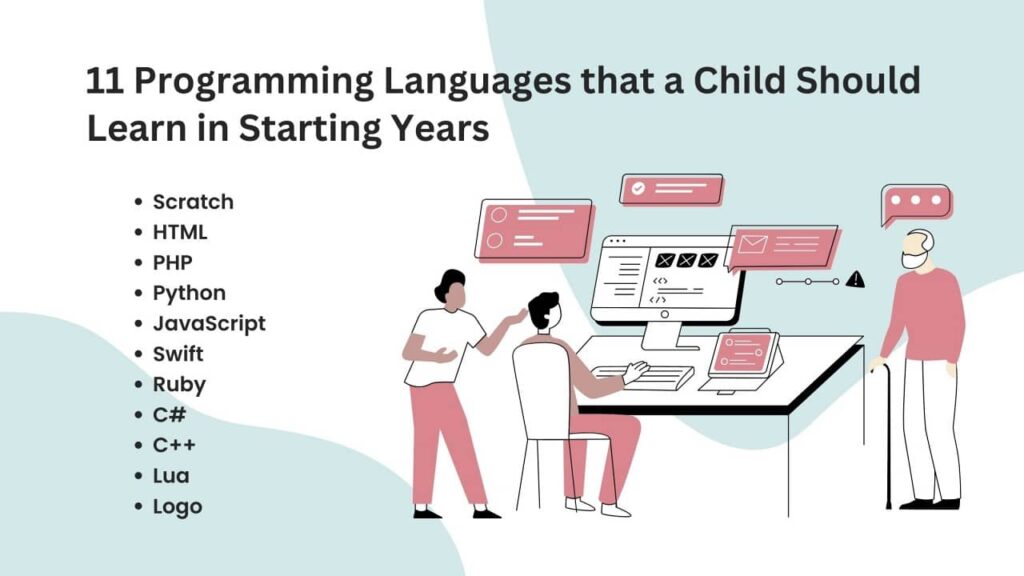Top 11 Programming Languages that a Child Should Learn in Begining. In our society’s increasing dependence on technology, it’s reasonable to state that basic computer programming is no more a skill that should be learned solely by people who are interested (and eventually master). Computer coding for kids should not be an after-school activity in which only forward-thinking parents enrol their children. It should be made a required course for all students.
Learning to code can be a valuable skill for children to develop. Not only can it help with problem-solving and logical thinking, but it can also open up many career opportunities in the future. There are many programming languages to choose from, but the following 11 are a great place to start for children.
These languages are designed to be easy to understand and use, and they cover a wide range of applications such as creating interactive websites, games, and mobile apps. The good news is that nowadays, these languages can be learned in the comfort of your home using youtube, online courses or even you can hire an online tutor.
Table of Contents
In this Blog we will Discuss 11 programming languages that children can learn:
11 Programming Languages That Should Learn in Starting
- Scratch
- HTML
- PHP
- Python
- JavaScript
- Swift
- Ruby
- C#
- C++
- Lua
- Logo
Scratch
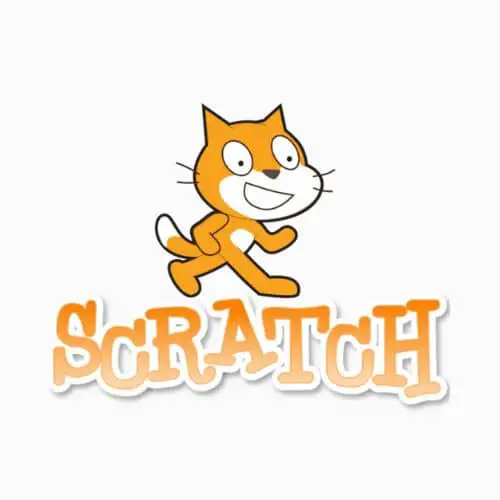
Scratch is a visual programming language that is designed to be easy for children to understand and use. It uses blocks to represent different commands and operations, which children can drag and drop to create interactive stories, games, and animations. Scratch is a great way to introduce children to the concepts of programming and computational thinking, as well as basic logic and problem-solving skills.
HTML
(Hypertext Markup Language) is a markup language used to create and structure content on the web? It is used to create the basic structure of a web page, including headings, paragraphs, images, links, and more. HTML is the foundation of all web pages and the foundation of web development.
HTML is made up of a series of elements, which are represented by tags. These tags are used to define the structure of the content on the page, such as headings, paragraphs, lists, images, and links. For example, the <h1> tag is used to create a heading, the <p> tag is used to create a paragraph, and the <img> tag is used to insert an image.
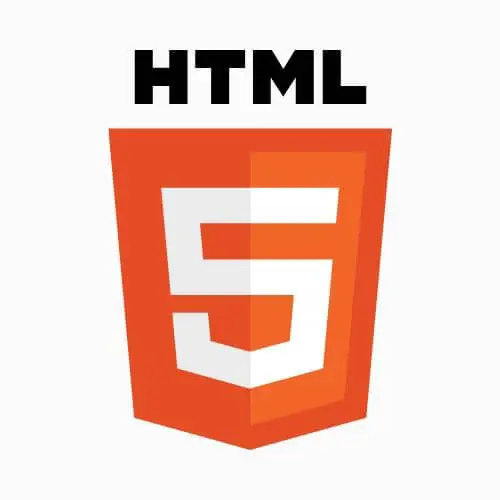
It is a fundamental building block of the web, and it is an essential skill for anyone looking to pursue a career in web development. It provides the structure and foundation for web pages and allows developers to create dynamic and interactive user experiences.
PHP
Should be learned after HTML because most of what we do with PHP nowadays includes retrieving and displaying web pages (with HTML). PHP is capable of many more tasks, although it is best known for creating interactive web pages.
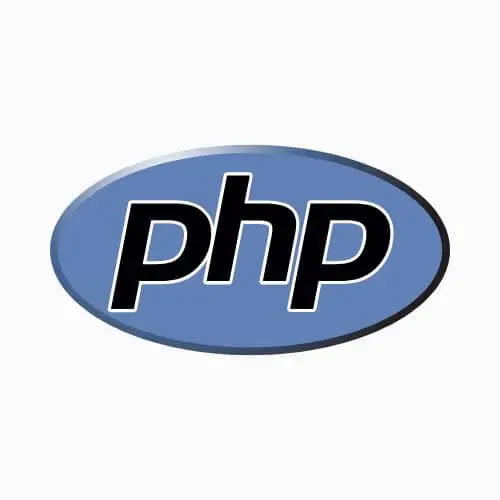
It is the computer code that powers major website content management systems like Drupal and WordPress. PHP is interpreted and should be simple to learn for older children who have a programming talent.
Python
Python is a high-level programming language that is easy to read and write. It is often used for scientific computing, data analysis, and machine learning. Python has a large and active community, which means that there are many resources and libraries available for children to use.
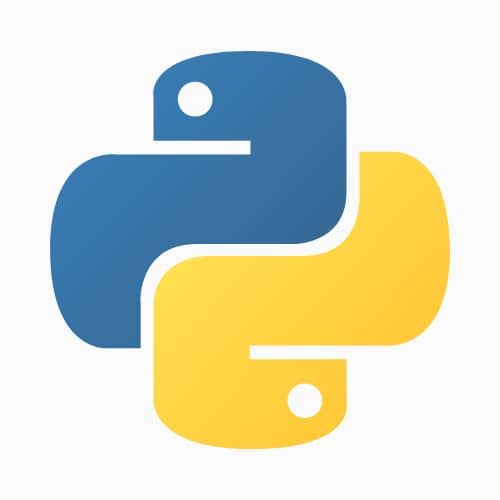
Additionally, Python is often used in schools and universities, making it a great choice for children who plan on pursuing a career in computer science or a related field.
JavaScript
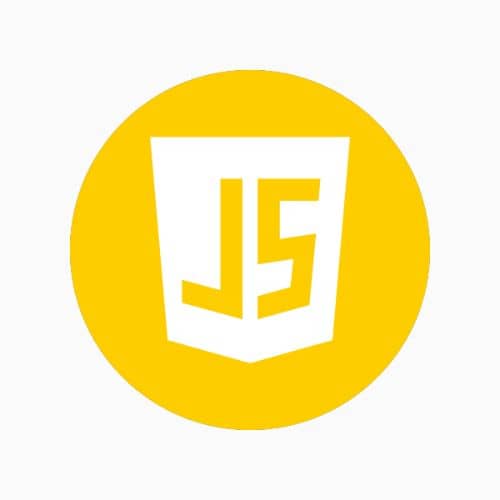
JavaScript is a popular programming language that is used to create interactive websites and web applications. It is often used in conjunction with HTML and CSS to create dynamic and responsive web pages. JavaScript can be used to create interactive forms, games, and other interactive elements on websites.
Swift
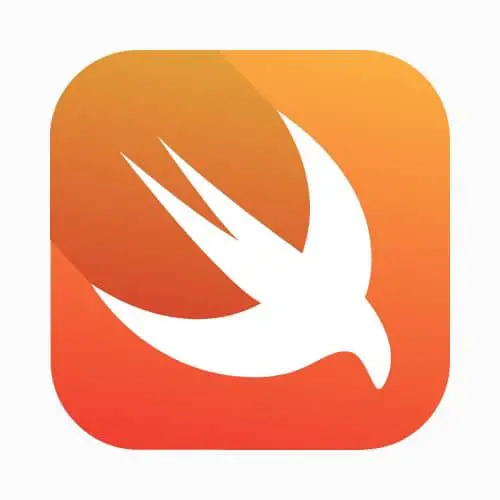
Swift is a powerful, object-oriented programming language that is used to create iOS apps. It is designed to be easy to use and read, making it a great choice for children who are interested in mobile app development. Swift is similar to Python in terms of its syntax, and it is a great choice for children who have already learned Python and want to take their skills to the next level.
Ruby

Ruby is a dynamic, object-oriented programming language that is easy to read and write. It is often used in web development, and the Ruby on Rails framework is a popular choice for building web applications. Ruby has a large and active community, and it is a great choice for children who want to learn a language that is widely used in the industry.
C# Programming Language
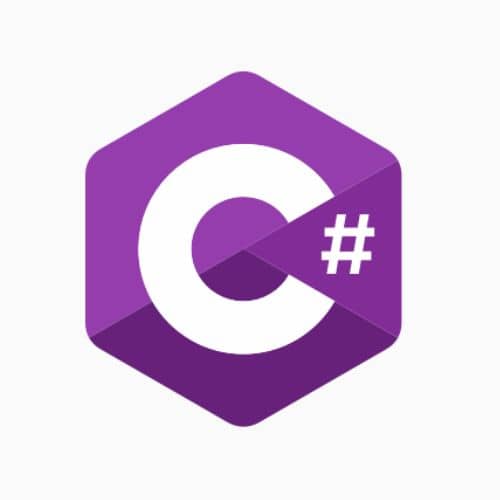
C# is a versatile, object-oriented programming language that is used to create Windows apps and games. It is a great choice for children who are interested in game development or creating Windows apps. C# is similar to Java in terms of its syntax, and it is a great choice for children who have already learned Java and want to take their skills to the next level.
C++ Programming Language
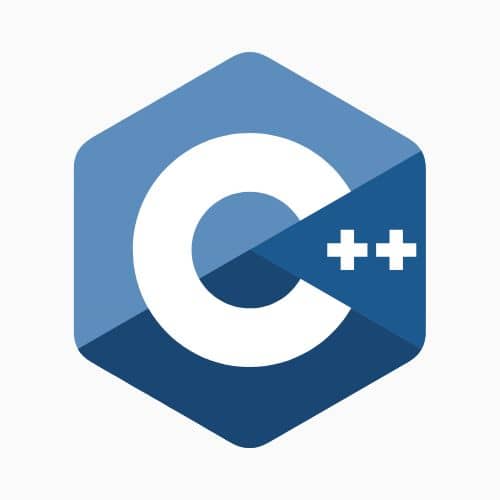
C++ is a powerful, high-performance programming language that is widely used in game development, operating systems, and other applications. It is a complex language, but it is a great choice for children who are interested in game development or low-level programming. C++ is a great choice for children who want to learn a language that is widely used in the industry.
Lua
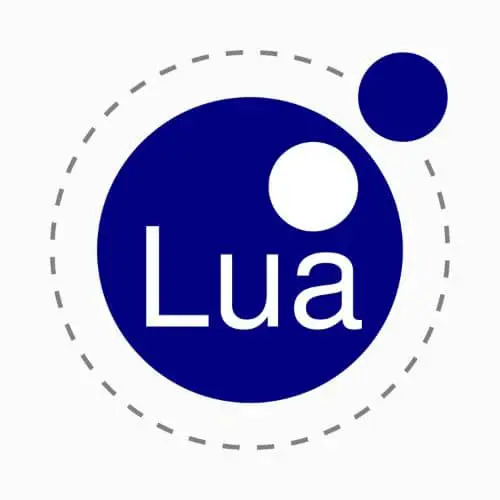
Lua is a lightweight, extensible programming language that is used in game development and scripting. It is often used as an embedded scripting language, and it is a great choice for children who are interested in game development or scripting. Lua has a small and simple syntax, and it is a great choice for children who are just starting to learn to program.
Logo Programming Language
The Logo is a programming language that is specifically designed to teach children basic programming concepts. It was developed in the late 1960s and early 1970s by Seymour Papert and others at the Massachusetts Institute of Technology (MIT). The language is based on a simple syntax and uses a turtle graphics metaphor, where commands are used to control a turtle on the screen to draw shapes and lines.
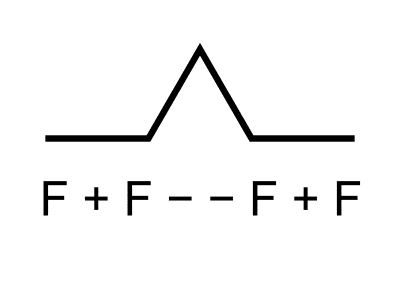
One of the main goals of Logo is to teach children how to think logically and solve problems using a computer. It is often used in educational settings and has been used to teach programming concepts to children as young as four years old. The language is designed to be interactive and hands-on, which helps children to understand the concepts more easily.
Some of the key features of a Logo include:
- Simple syntax: Logo uses a simple, easy-to-understand syntax that is designed to be accessible to children.
- Turtle graphics: The turtle graphics metaphor is a visual representation of the commands that children use to control the turtle on the screen. This helps children to understand the concepts of programming more easily.
- Interactive: Logo is designed to be interactive and hands-on, which helps children to understand the concepts more easily.
- Educational: Logo is used in educational settings and has been used to teach programming concepts to children as young as four years old.
Conclusion
there are many programming languages that children can learn to start their journey in computer science. Scratch, Python, JavaScript, Swift, Ruby, C#, C++, Lua, Smalltalk, and Logo are all great choices for children as they are easy to learn, widely used, and provide a strong foundation for further learning.
Each language has its strengths and uses cases, and it’s important to consider the child’s interests and goals when choosing a language to learn. With a solid foundation in programming, children will be well-equipped to tackle more advanced topics and pursue a career in computer science or a related field.
